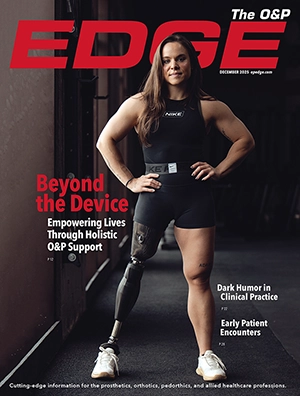Osseointegration (OI) offers a groundbreaking approach to prosthetic limb integration, promising improved mobility and quality of life for patients. The bone-anchored limbs offer direct skeletal attachment, eliminating many challenges of conventional prosthetic limbs, including soft tissue irritation, unstable socket fits, and managing changes in limb volume. Perhaps the most remarkable observation from OI patients is that many regain a sense of proprioception, or the ability to perceive the position and pressure of their prosthetic limbs without visual confirmation, a phenomenon known as osseoperception.
The momentum around OI is accelerating the pace of education around protocols for evaluating candidates, as well as surgical, prosthetic, and rehabilitation considerations for patients with bone-anchored limbs. The emergence of organizations like the University of Colorado Hospital’s Bone-Anchored Limb Research Group (BALRG) are a testament to the profession’s desire to make OI accessible while ensuring successful clinical applications for optimal patient outcomes. Launched three years ago, BALRG’s mission is to perform impactful translational research to improve the lives of OI patients.
Support authors and subscribe to content
This is premium stuff. Subscribe to read the entire article.





